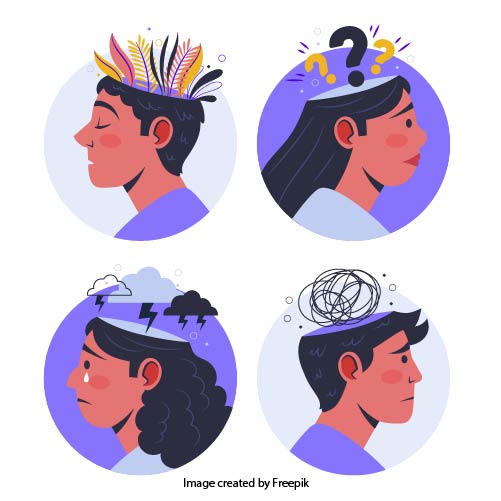Trauma-Informed Practice
This section of the Inclusive Virginia website provides information, instructional strategies, and resources for adult education practitioners on supporting adult learners with differing abilities through trauma-informed practice.
Trauma-Informed Practice (TIP) is an approach to service that shifts the focus from “What is wrong with you?” to “What has happened to you?” It acknowledges the experiences that a person has encountered and how those experiences may have impacted an individual’s mindset, health, and abilities.
Some common characteristics of trauma-related behavior in the classroom include:
- Difficulty concentrating, focusing, and transitioning from one activity to the next
- Low self-confidence
- Regular tardiness or absence from class
- Perfectionistic, controlling, or anxious behavior
- Forgetfulness
- Strong emotions: irritability, anger, panic attacks, or crying
- Physical and/or verbal aggression
Note: This is not a complete list. Trauma related-behavior looks differently for everyone.
Some common characteristics of trauma-informed practice include:
- Creating physically and psychologically safe environment for those who have experienced trauma
- Making transparent decisions to build trust and relationships
- Integrating individuals with shared experiences to support the delivery of services
- Leveling power dynamics to create an environment for shared-decision making
- Recognizing and addressing biases and stereotypes

Trauma-Informed Practice Resources
Trauma-informed practices in adult education should be considered at the program and classroom level. Adult education practitioners can use the following information to learn more about trauma-informed practices and instruction.
Information on Trauma-Informed Practice
- John Rigg: The effect of trauma on the brain and how it affects behaviors (Video)
- Janet Seahorn: Understanding PTSD’s effect on brain, body, and emotions (Video)
- Community Resilience Initiative Resources (Website)
- What is Trauma-Informed Care (TIC Implementation Resource Center) (Website)
- What is Trauma-Informed Teaching? (Article)
- Dinner Table Resilience: Mental Health Resource for our Community (Toolkit)
- Trauma-Informed Care: A Primer For Refugee Service Providers (Article)
Instructional Strategies aligned with TIP
Resources for TIP in the classroom
Six Principles of Trauma-Informed Practice (From SAMHSA)
- Safety
Throughout the organization, staff and the people they serve feel physically and psychologically safe. - Trustworthiness and transparency
Organizational operations and decisions are conducted with transparency and the goal of building and maintaining trust among staff, clients, and family members of those receiving services. - Peer support and mutual self-help
These are integral to the organizational and service delivery approach and are understood as a key vehicle for building trust, establishing safety, and empowerment. - Collaboration and mutuality
There is recognition that healing happens in relationships and in the meaningful sharing of power and decision-making. The organization recognizes that everyone has a role to play in a trauma-informed approach. One does not have to be a therapist to be therapeutic. - Empowerment voice, and choice
Organization aims to strengthen the staff, client, and family members’ experience of choice and recognizes that every person’s experience is unique and requires an individualized approach. This builds on what clients, staff, and communities have to offer, rather than responding to perceived deficits. - Cultural, historical, and gender issues
The organization actively moves past cultural stereotypes and biases , offers culturally responsive services, leverages the healing value of traditional cultural connections, and recognizes and addresses historical trauma.
Instructor Self-Care
Instructors can use self-care to help avoid burnout and secondary traumatic stress (see below). The definition of self-care is any action that you use to improve your health and well-being. According to the National Institute of Mental Illness (NAMI), there are six elements to self-care:
- Physical
- Psychological
- Emotional
- Spiritual
- Social
- Professional
Mental Health America provides suggestions on how instructors can protect their mental health. Below are a few suggestions:
- Set boundaries early on – and hold them
- Focus on what you can control
- Move your body
- Stay in touch with friends and family
- Keep up with self-care
- Maintain reasonable expectations
- Check in on each other
- Express gratitude
- Take time to laugh
Secondary traumatic stress occurs when someone experiences indirect trauma as a result of hearing about others’ trauma; it is often seen in those who work with individuals who have experienced traumatic life events, such as educators, social workers, or health care workers. Instructors should be aware of its signs and tools for self-care.
This video from the University of Kentucky explains secondary traumatic stress.